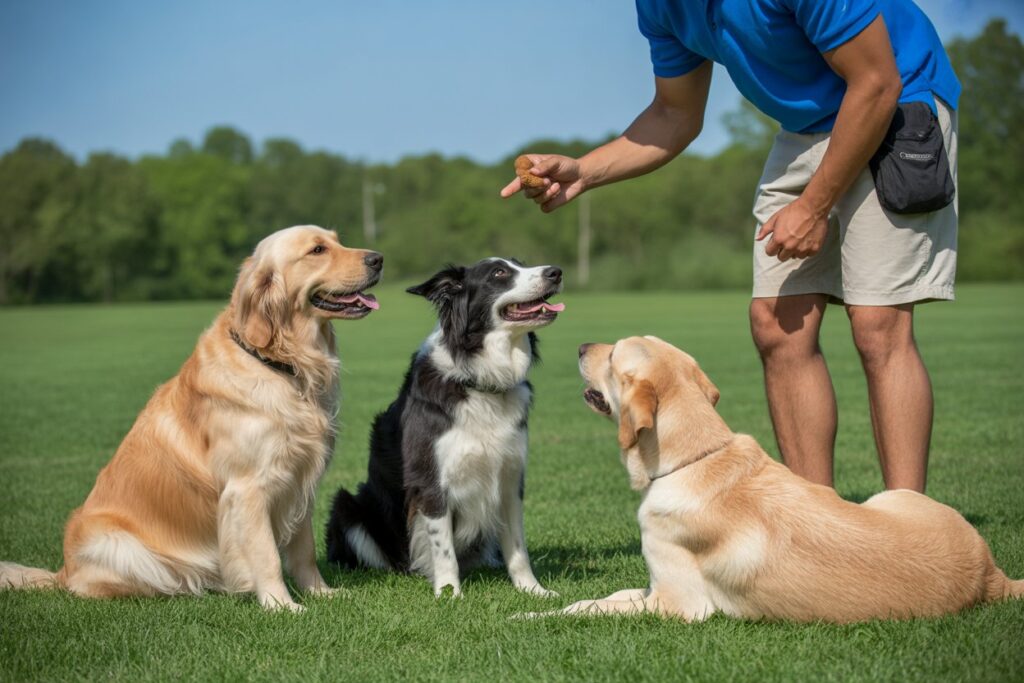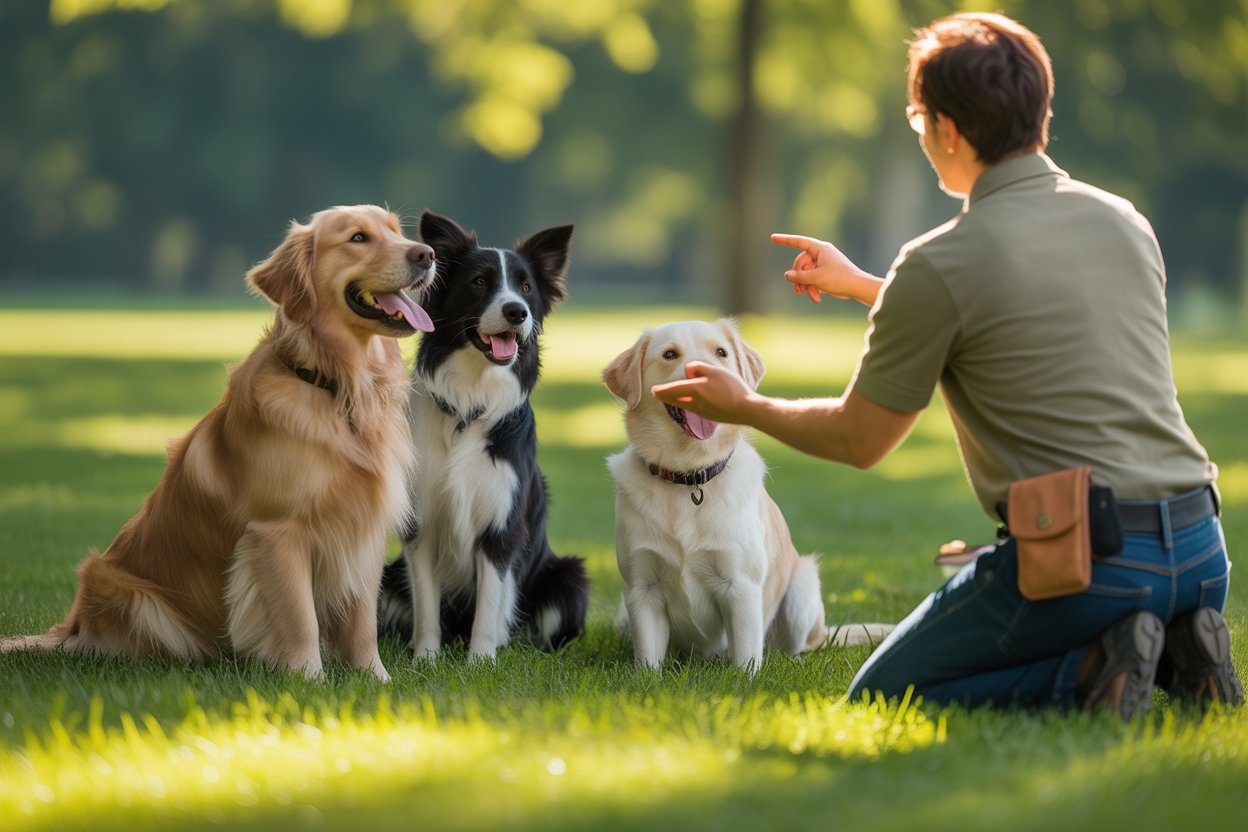Training your dog isn’t just about teaching tricks—it’s about building communication and trust. Whether you’re raising a playful puppy or working with an older rescue dog, teaching basic commands ensures safety, structure, and a better bond between you and your furry friend.
In this guide, we’ll walk you through the top 5 essential dog commands every dog should know, their benefits, and how to train them effectively—even as a beginner.
Why Dog Commands Matter for Every Owner

Before we dive into the commands, it’s important to understand why basic obedience training matters:
- Safety – A well-trained dog is less likely to run into traffic or harm themselves.
- Better Behavior – Commands reduce unwanted behaviors like jumping or chewing.
- Bonding – Dogs thrive on structure and direction; training builds trust.
- Public Etiquette – Social dogs are more enjoyable in public and around guests.
According to the American Kennel Club (AKC), training not only makes life easier for owners, but it also helps dogs feel more confident and secure.
1. Sit – The Foundation of Obedience
Why It’s Important:
“Sit” is often the first command dogs learn and one of the most useful. It’s a great way to manage overexcitement or help your dog stay calm before mealtime, walks, or when meeting new people.
How to Train It:
- Hold a treat close to your dog’s nose.
- Move your hand upward, causing their head to follow and their bottom to lower.
- As soon as they sit, say “Sit” and reward.
Tip: Be consistent and always reward calm sitting behavior. This is a perfect “gateway” command.
2. Stay – Teaching Patience and Control
Why It’s Important:
“Stay” teaches your dog impulse control, making it one of the most critical commands for safety—especially near roads, doorways, or during vet visits.
How to Train It:
- Ask your dog to “Sit.”
- Open your palm toward them and say “Stay.”
- Take a step back. If they remain, reward and repeat, increasing distance gradually.
Helpful Variation: Use “Wait” for short pauses (like before crossing a street), and “Stay” for longer-duration stillness.
3. Come – The Life-Saving Recall
Why It’s Important:
This command can literally save your dog’s life. Whether off-leash at a park or during an emergency, a reliable recall ensures they return to you immediately.
How to Train It:
- Start indoors with low distractions.
- Say “Come” enthusiastically while backing up.
- When your dog reaches you, reward with high-value treats and praise.
Pro Tip: Never call your dog to “Come” for something negative (like a bath or punishment). Keep it a positive experience.
4. Leave It – For Their Safety
Why It’s Important:
Dogs explore the world through their mouths. “Leave it” can prevent them from grabbing harmful or dangerous objects—like chicken bones or chocolate on the ground.
How to Train It:
- Place a treat in both hands.
- Show one closed fist with the treat inside and say “Leave it.”
- Let them sniff, lick, or paw at your hand.
- Once they stop and look away, reward with the treat from your other hand.
Bonus Benefit: Helps curb behaviors like chasing squirrels or chewing furniture.
5. Down – For Calmness and Respect
Why It’s Important:
“Down” helps control overexcited dogs and signals submission in a non-aggressive way. It’s especially helpful in social situations or when guests visit.
How to Train It:
- Start with your dog in a “Sit” position.
- Hold a treat to the ground between their front paws.
- Say “Down” as you slowly move the treat outward.
- Reward once they lie completely flat.
Consistency Is Key: Avoid rewarding partial downs. Wait until your dog is fully lying down.
Bonus Commands Worth Teaching
- Heel – Keeps your dog walking politely at your side.
- Drop It – Useful for releasing objects or toys from their mouth.
- Place – Teaches your dog to go to a designated area (like a mat or bed).
These can be added once the top five are reliably learned.
FAQs About Basic Dog Commands
What Are the First Commands to Teach a Puppy?
Start with Sit, Stay, and Come. These form the basis of obedience and are easiest for puppies to grasp.
How Long Does It Take for a Dog to Learn Commands?
It varies by breed, age, and individual personality, but consistency and positive reinforcement typically show results in 2–4 weeks.
Can Older Dogs Learn New Commands?
Absolutely! While puppies may learn faster, dogs of any age can be trained with patience and the right motivation.
How Many Commands Should I Teach at Once?
Focus on one command at a time. Once it’s mastered, move to the next. Avoid overwhelming your dog with too many new cues.
Final Thoughts: Building a Well-Behaved Companion
Mastering the Top 5 Commands Every Dog Should Learn isn’t just about obedience—it’s about giving your dog structure, confidence, and a way to succeed in a human world.
Whether you’re training for safety, manners, or companionship, these essential commands create a stronger bond and a better life for both of you.

Leave a Reply